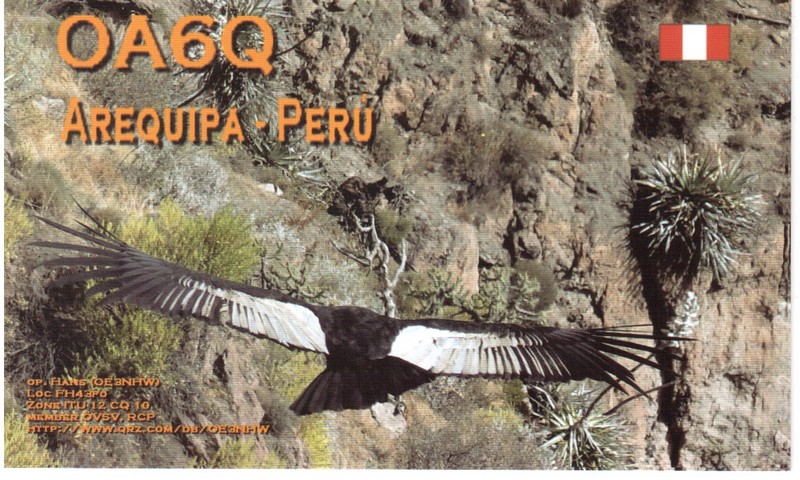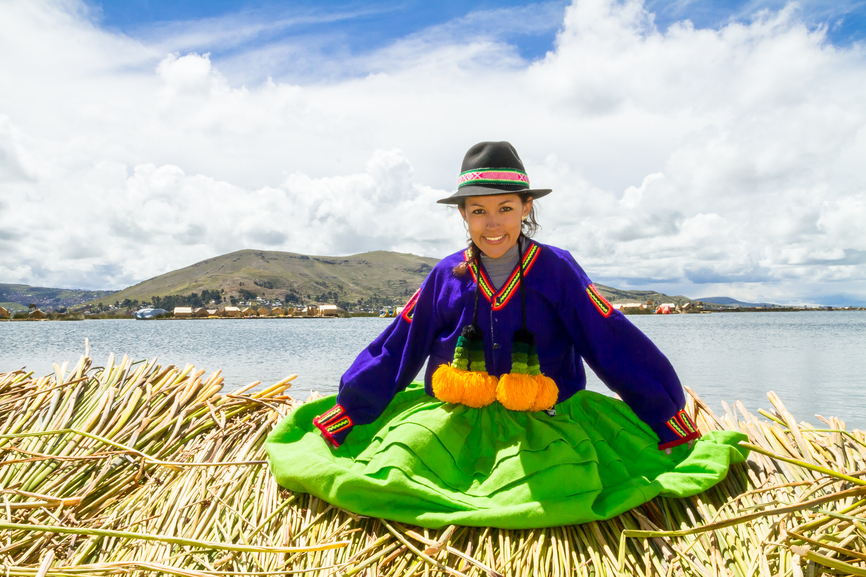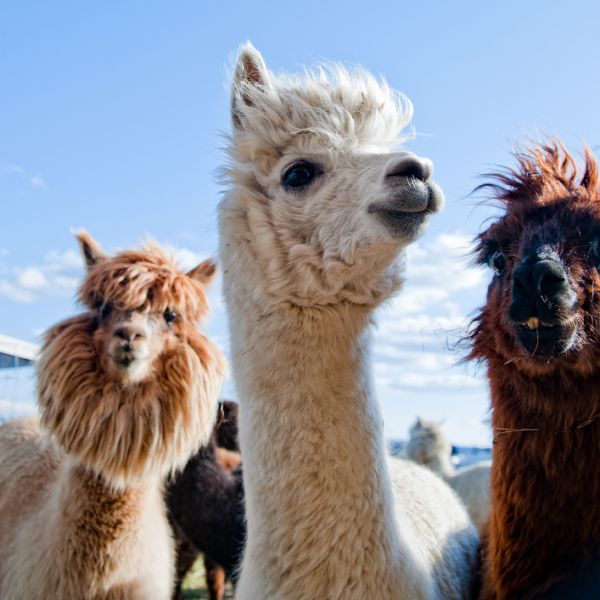Hans, OE3NHW is currently active from Peru as OA6Q.
He is operate on HF bands.
Recent DX Spots OA6Q
QSL via home call, LOTW, eQSL.
Peru: A land of ancient cultures
Officially the Republic of Peru, Peru is a country in western South America. It is bordered Colombia and Ecuador to the north, Brazil to the east, Bolivia to the southeast, Chile to the south, and the Pacific Ocean to the west.
Peru is home to approximately 30.4 million people of varying ethnic backgrounds. Ethnic backgrounds to the region include the Africans, Europeans, Amerindians and Asians. Spanish is the main language spoken in Peru, although a huge percentage of the population does speak Quechua in addition to other native languages. As a result of the diversity in culture, there is a huge diversity in terms of expressions in fields such as literature, art, cuisine and music.
After Brazil and Argentina, Peru is the third largest country in South America. It is ranked among the 20 largest countries in the world.
The national flag of Peru is the Bandera Nacional. It was adopted by the Peruvian government on the 25th of February 1825. The flag comprises of three equal, verticals bands in red, white and red; which are the colors of the Inca Empire. The red color on the flag symbolizes the bloodshed during the struggle for Peru's independence and the courage of the men fighting for freedom.

Geographical Aspects
Peru is located on the western part of South America just below the equator. It has a diverse topography that comprises of a coastal plain to the west, high rugged mountains to its center and a lowland jungle in the east that leads into the Amazon River basin. Nevado Huascaran , which stands at 22,205 feet (6,768 m) is the highest point in Peru.
Peru covers 1,285,216 km2 (496,225 sq mi) of western South America. It is bordered Colombia and Ecuador to the north, Brazil to the east, Bolivia to the southeast, Chile to the south, and the Pacific Ocean to the west.
The Andes Mountains, which run parallel to the Pacific Ocean define the three regions that are traditionally used to describe the country geographically. To the west is the coast(costa),which is a narrow plain that is mainly arid with the exception of the valleys that are as a result of seasonal rivers. The highlands(sierra) which is the region of the Andes is inclusive of the Altiplano plateau in addition to the highest peak of the country, the Huascarán that stands at 6,768 m (22,205 ft). The jungle (selva) makes up the third region. It is a wide expanse of flat terrain that extends to the east and is covered by the Amazon rainforest that extend. Approximately 60% of the country's area is located within this region.
A look at Peru’s geographical aspects in a glance:
- Area: water- 5,220 km², land- 1,279,999 km²
- Maritime claims: territorial sea- 200 nmi (370.4 km; 230.2 mi), continental shelf-200 nmi (370.4 km; 230.2 mi)
- Irrigated land: 12,800 km² (1993 est.)
- Land use according to a 1993 estimate:
arable land: 3%
permanent crops: 0.5%
permanent pastures: 21%
forests and woodland: 66%
other: 9.5%
Natural hazards: flooding, earthquakes, landslides , tsunamis, mild volcanic activity

Climate
Peru’s climate varies based on the landscape with the east being mainly tropical, the west being desert and Andes being temperate. The combination of tropical latitude, topography variations mountain ranges, in addition to two ocean currents (El Niño and Humboldt) gives Peru a large diversity of climates, which include 28 of the 32 world climates.
The coast experiences a subtropical climate with very little rainfall. The eastern lowlands experience an Equatorial climate with rain and hot weather distributed all year long. The Andes mountains experience a cool-to-cold climate with very dry winters and rainy summers.
Religion
Majority of the population in Peru(81.3%) according to the 2007 census describe themselves as Catholics, the Evangelical take on 12.5% of the population while other religions such as Judaism, Protestantism, Jehovah’s witness and The church of Jesus Christ of Latter-day Saints take on 3.3% of the population. Those who describe themselves as non-religious take on 2.9% of the population.
Culture
The primary influences of the Peruvian culture are the Spanish and Amerindian traditions. Other cultural influences are the African, Asian, and other European ethnic groups.
Peruvian music has Spanish, Andean and African roots while the cuisine is a blend of Amerindian and Spanish food, with strong influences from African, Chinese, Japanese, Italian, and Arab cooking. Common dishes to the region include ceviche, pachamanca and anticuchos.

Facts
Peru grows over 55 varieties of corn, which come in different colors such as purple, yellow, white and black.
Originally, the potato is from Peru, and there are over 3,000 different varieties in the region.
Peru’s traditional dish is the Guinea Pig also known as Cuy
Peru has the second largest amount of Shamans in the world, second only to India.
Peru is the 6th largest producer of gold.
Cats can be eaten in Chincha on Peru’s southern coast.
Tanguis and Pima which are the finest cottons in the world are from Peru.
Peru’s Independence Day, known as ‘Fiestas Patrias’ is celebrated on July 28
At 3,535 meters (11,597 feet) deep, the Cotahuasi Canyon in the Arequipa region is considered one of the world’s deepest canyons. It is twice as deep as the Grand Canyon USA.
The Amazon Rain forest covers two thirds of Peru
Yellow underpants are traditionally given to friends and family on New Year’s Eve.
Peru is one of the most bio-diverse countries on the planet, with some 90 different micro-climates.
Spanish, Quechua and Aymara make for the three official languages in Peru, however, to the east of the Andes in Amazon Jungle regions it is thought that natives speak a further thirteen different languages.
The national drink of Peru if the Pisco Sour, which is made from Pisco brandy, sugar water lemons, ice, egg whites and finished with bitters.
The world’s highest navigable lake, Lake Titicaca is found in Southern Peru. It is also South America’s largest lake.

